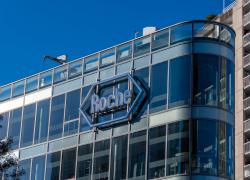
Roche reins in the TIGIT expectations
Skyscraper-06 blows up spectacularly, and that’s bad news for Skyscraper-01.
Skyscraper-06 blows up spectacularly, and that’s bad news for Skyscraper-01.

The failure of another TIGIT study in lung cancer might elicit little more than a shrug, but Skyscraper-06 deserves a special mention. Roche today said that not only had this failed on both survival metrics, but on both OS and PFS its anti-TIGIT MAb tiragolumab showed “reduced efficacy” versus control.
The group also took the highly unusual step of spelling out the hazard ratios and confidence intervals for OS and PFS, rather than stating baldly that the trial had failed and that data would come at a conference later. The numbers appear to show a meaningful benefit – not just no difference – for the control arm, casting doubt on the overall survival analysis from the Skyscraper-01 study, a key 2024 Roche catalyst.
The read-across isn’t direct, as the two trials use different regimens and different PD-L1 cutoffs, but the settings both concern first-line NSCLC. The most important takeaway seems to be that even if Skyscraper-01 is nominally positive – as leaked interim OS data suggest it to be – its result might not be clinically meaningful.
Keytruda comparator
Skyscraper-01 tests tests tiragolumab plus Tecentriq versus Tecentriq in NSCLC patients expressing PD-L1 at ≥50%. Skyscraper-06 looked at a tiragolumab/Tecentriq/chemo triplet in non-squamous NSCLC irrespective of PD-L1 status.
Crucially, Skyscraper-06’s comparator arm wasn’t Tecentriq but rather Merck & Co’s Keytruda plus chemo. Today Roche shares fell 2% when the group revealed that both Skyscraper-06 primary endpoints, PFS and OS, had failed, the former at a mature analysis and the latter at its first interim look.
Skyscraper-06 patients were at 33% greater risk of death in the tiragolumab arm versus control, and at 27% greater risk of progression or death, Roche revealed. For both hazard ratios the confidence interval’s lower bound is above 1.00, suggesting that had Skyscraper-06 been designed to test Keytruda versus the tiragolumab regimen then the Merck drug would have been statistically superior.
One obvious takeaway from such a disastrous failure is that the difference in survival is down to Tecentriq being a worse drug than Keytruda, and that on top of this tiragolumab adds nothing to efficacy. Unsurprisingly, Skyscraper-06 has now been halted.
What next?
A more interesting question is what this means for Skyscraper-01, whose final OS readout is a 2024 second-half catalyst, having been delayed from 2023.
Skyscraper-01 is known to have failed on PFS, but no numbers have been revealed here and nothing is known about the study’s alpha allocation. Hopes have been stoked by leaked results of its second interim OS analysis, which showed an immature median benefit of 6.2 months versus Tecentriq alone.
It was notable, however, that Tecentriq control in Skyscraper-01 was underperforming the median OS in the drug’s registrational Impower-110 study. Not only that, but Tecentriq plus tiragolumab scoring 22.9 months’ median OS looks mediocre against Keytruda’s 26.3 months in the Keynote-024 trial, so even if the combo does beat Tecentriq it’s likely to underperform Keytruda monotherapy.
Given the Skyscraper-06 blow-up, that damning cross-trial comparison just became even more relevant.
Cross-trial median OS comparison in 1st-line NSCLC
| Keytruda + chemo | Tecentriq + chemo | Tecentriq + TIGIT + chemo | |
|---|---|---|---|
| Non-squamous, irrespective of PD-L1 expression | |||
| Keynote-189 | 22.0mth | – | – |
| Impower-150 | – | 19.4mth | – |
| Skyscraper-06 | ? | – | HR=1.33 vs Keytruda + chemo |
| Keytruda | Tecentriq | Tecentriq + TIGIT | |
|---|---|---|---|
| PD-L1 ≥50%, irrespective of histology | |||
| Keynote-024 | 26.3mth | – | – |
| Impower-110 | – | 20.2mth | – |
| Skyscraper-01* | – | 16.7mth | 22.9mth |
Note: *at second interim. Source: OncologyPipeline.
5618













